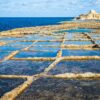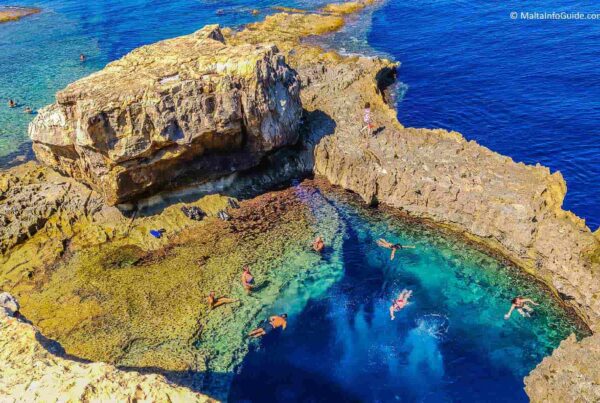
The origins of the Shrine of Our Lady of ta’ Pinu are unknown. It was first recorded in the archives of the Curia in Gozo, when the Bishop Domenico Cubelles paid a visit to the chapel. This noted that the chapel had just been rebuilt and that it belonged to the noble family of “The Gentile”.
In 1575 the apostolic visitor Pietro Dusina was delegated by Pope Gregory XIII to visit the Maltese Islands. In his pastoral visit to the church, he found that it was in a very bad state. He ordered the church to be closed and demolished and its duties passed to the parish church, now the Cathedral of the Assumption of the Blessed Virgin Mary of Gozo. When demolition began the workman broke his arm while striking the first blow. This was taken as an omen that the chapel should not be demolished. The church was the only chapel on the island to survive Dusina’s decree ordering the demolition of other similar chapels.
Pinu Gauci became the procurator of the church in 1598 and its name was changed from “Of the Gentile” to “Ta` Pinu”, meaning “Of Philip”. In 1611 Gauci offered money for its restoration. It was rebuilt, with a stone altar erected and investments for liturgical services provided. Gauci also commissioned the painting of the Assumption of Our Lady for the main altar. This was done in 1619 by Amadeo Perugino.
In June 1883 when a peasant woman, from the village of Għarb, Karmni Grima, was alleged to have heard the voice of the Virgin Mary in the small chapel that then occupied the site. It quickly became a centre of pilgrimage as many miracles and acts of grace were said to be manifested there, including saving Gozo from the plague which had hit Malta at the time. The locals therefore decided to build a larger and more magnificent church on the site in honour of the Blessed Virgin.
The works for the new church began on 30 May 1922 on the initiative of the church’s rector Monsignor Ġużepp Portelli and was consecrated on 31 August 1932. It was built in a neo-romantic style. Inside the church there are 6 mosaics, 76 coloured windows and many ex-voto. The bell tower is 61 metres high.
On the main road leading to the basilica, five niches containing frescoes were placed. These are referred to as The Pilgrim’s Way, as the devoted can walk from one to the other stopping to meditate along the way. Outside the church, on the parvis, one can find beautifully crafted mosaic pieces on either side, while opposite the church, running up Għammar Hill, is a series of 14 marble statues representing the Stations of the Cross (Via Crucis).
The original 16th century chapel was fully integrated into the new church, behind the altar, and still contains the painting of the Assumption to Heaven of Our Lady, from which the voice is said to have spoken to Karmni Grima. Inside one can admire the impressive architecture and witness the devotion of the people, expressed through items like casts, photos, written stories, baby grows, among others, that decorate the walls of the two rooms on either side of the altar, as offerings of gratitude for miracles and intercessions of Our Lady of Ta’ Pinu.
Pope John Paul II celebrated mass on the parvise of the shrine during his visit to the island of Gozo on 26 May 1990.On 18 April 2010, when visiting Malta, Pope Benedict XVI donated and placed a Golden Rose in front of the devotional image of Our Lady Of Ta’ Pinu which was brought over from Gozo to Malta for this special occasion. The Pope invited everybody to “Pray to Her Under the Title Queen of the Family”.
The church building is listed on the National Inventory of the Cultural Property of the Maltese Islands.






















